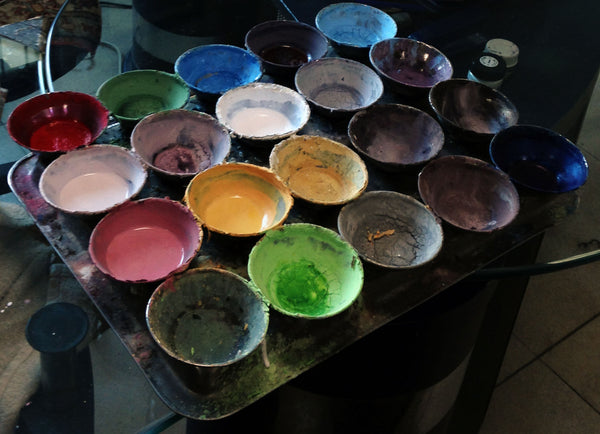- Continue Shopping
- Your Cart is Empty
From Sketch to Loom: The Shorthand of Knotting Rugs

With hundreds of thousands, or millions, of knots, how do the weavers get even the most complicated designs so perfectly perfect?
Skill, of course, but also an orchestrated process among many expert craftsmen.

The process of preparing a design for weaving is not dissimilar from the way comics are drawn: outlines first, then color. A trained designer will pencil sketch the outlines of a classic or new design onto a very large graph paper, square by square. A colorist — sometimes the same person, but usually another craftsman — will carefully paint in the design, being sure to indicate areas where edges should be softened with a darker or lighter shade.

For a rug that will be symmetrical, either as an all-over motif or a central medallion, only one quarter of the rug’s whole design is prepared in this way — the paper is then simply rotated to complete the other sections.
All of this preparation takes place in the design center of a workshop; the weaving will take place elsewhere in the workshop, on a large, vertical loom.

Depending on the complexity of the design and size of the rug, the weaver may dedicate up to a year to complete it. Their guide is the design that has been provided to them — but not all weavers use it in the same way.

Some weavers prefer to work directly off of the design paper, folding it down to the section they’re working on and tucking it into the loom’s thread above the area where they are working. Others, however, want an even more concise process of interpretation. For these weavers, the drawing is transcribed into a kind of text-based short hand:
Row 1: Bbbbyyyyrrrrwwwbbwwbbyy
It looks complicated, but it’s actually quite simple: each letter stands for the color of the knot to be tied, in this particular order. When the short hand ends, the weaver repeats it. If there are variations for different segments, those are transcribed in the same way. Most weavers also tuck this paper into the thread of their loom above their workspace.
These simple tools act as their guides to create magnificent works of art.
(Note: There is a whole class of village rugs that are one-of-a-kind and often have minor imperfections or nuances; these are often made by memory by women in the family. You can forgive them these minor peccadillos, which, for many collectors, make the most desirable rugs to find).






Erin Eisinger
Author
Floorplan CEO and Co-Founder. Designer. Storyteller. Entrepreneur.